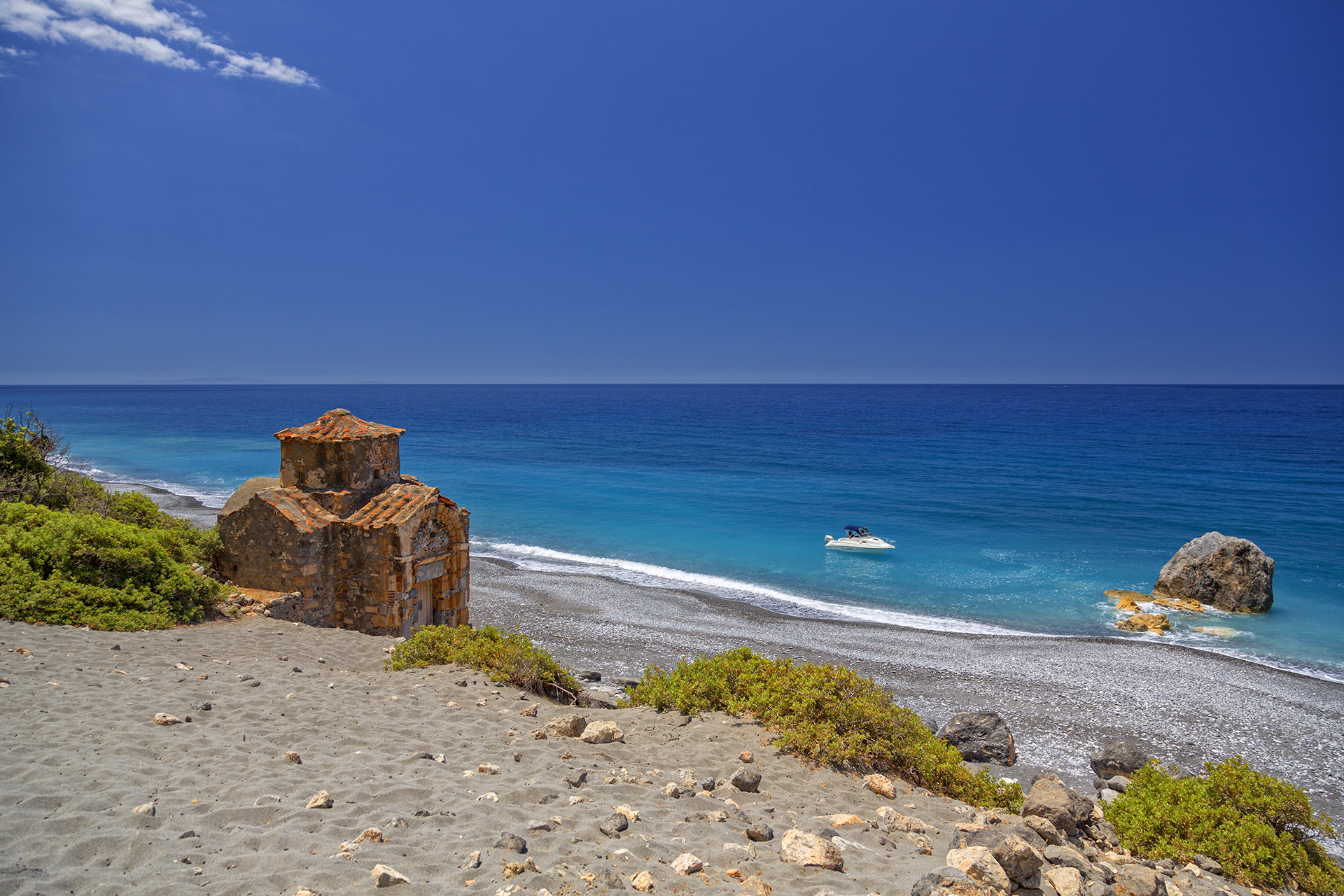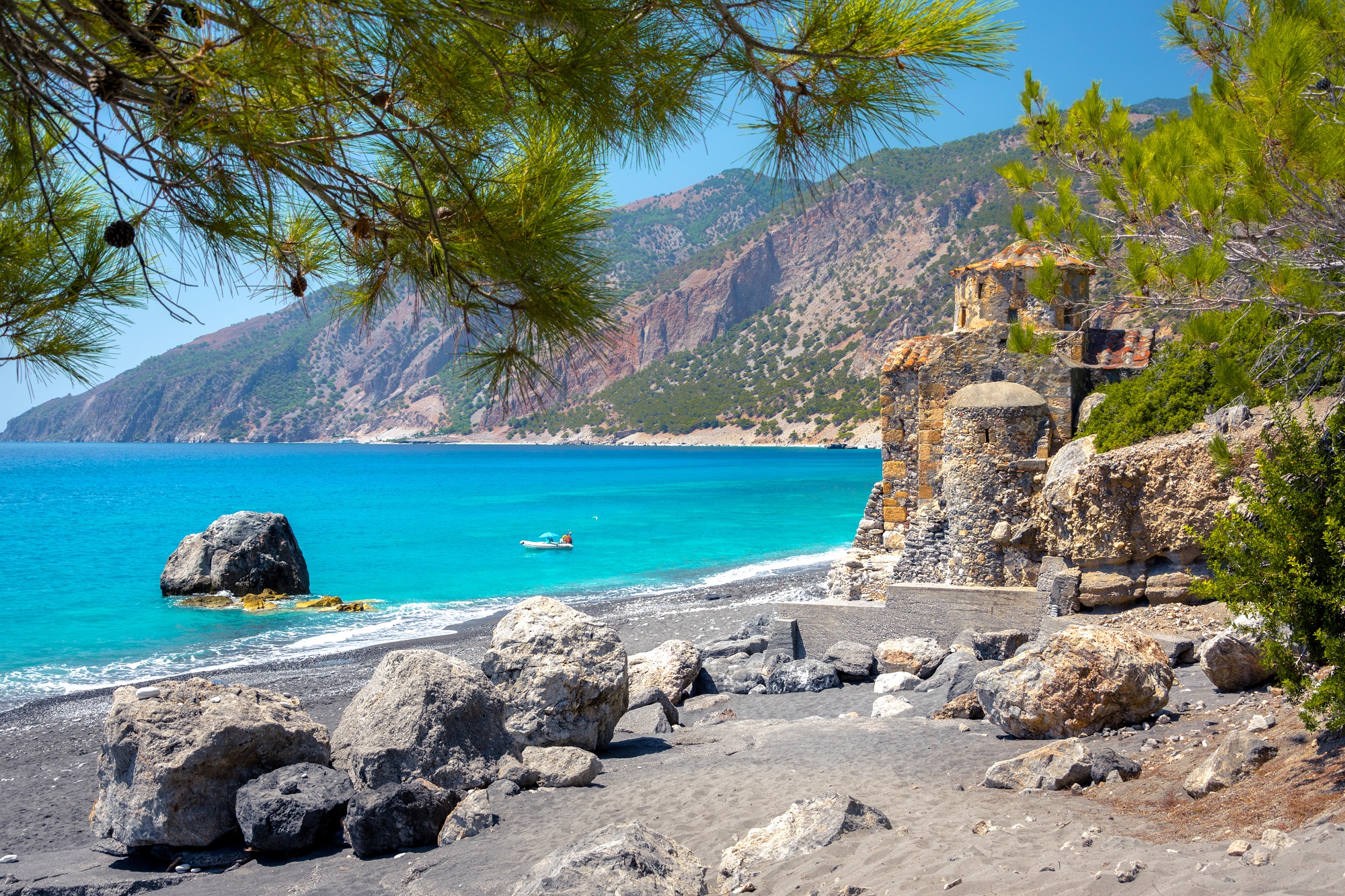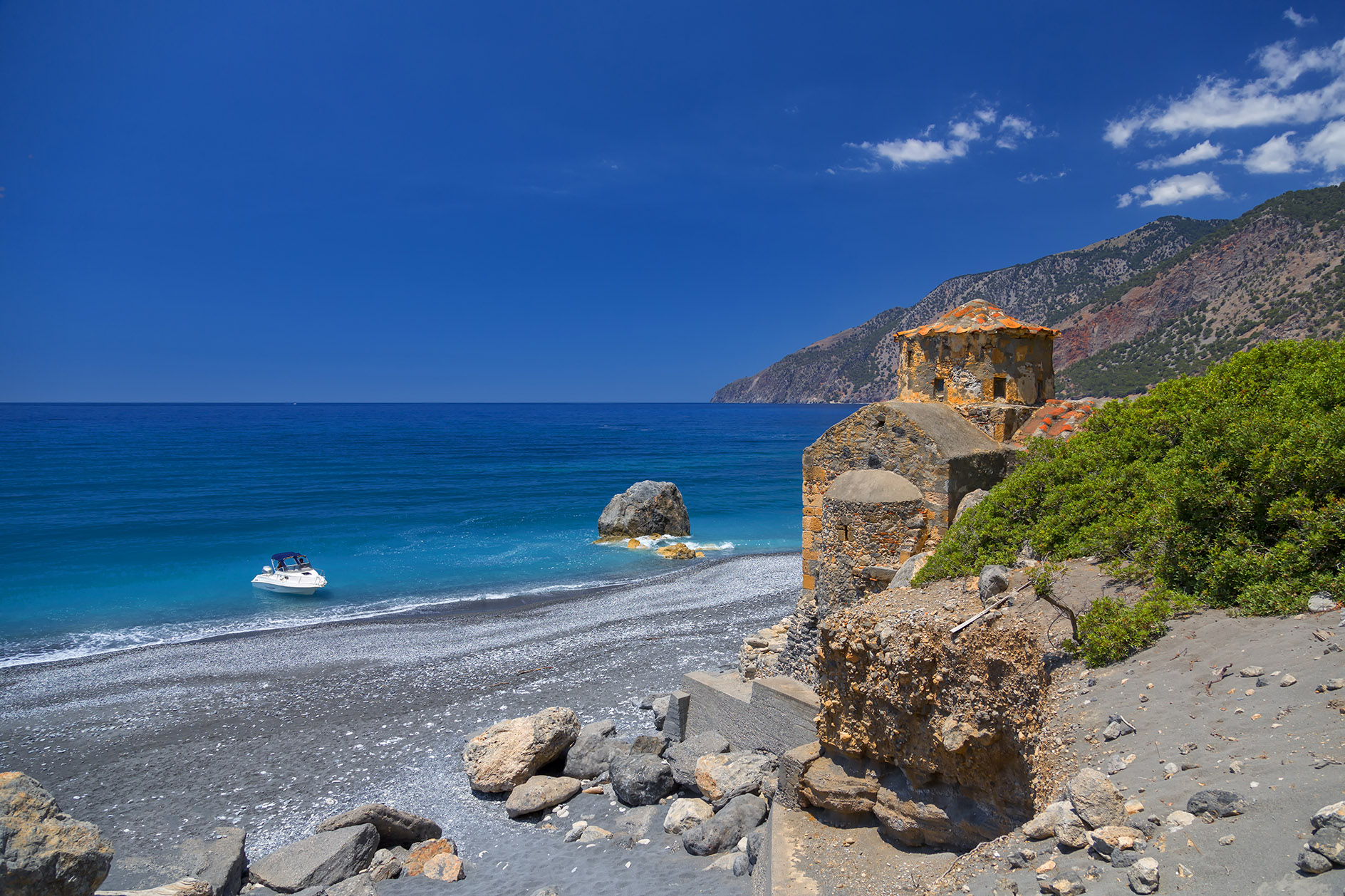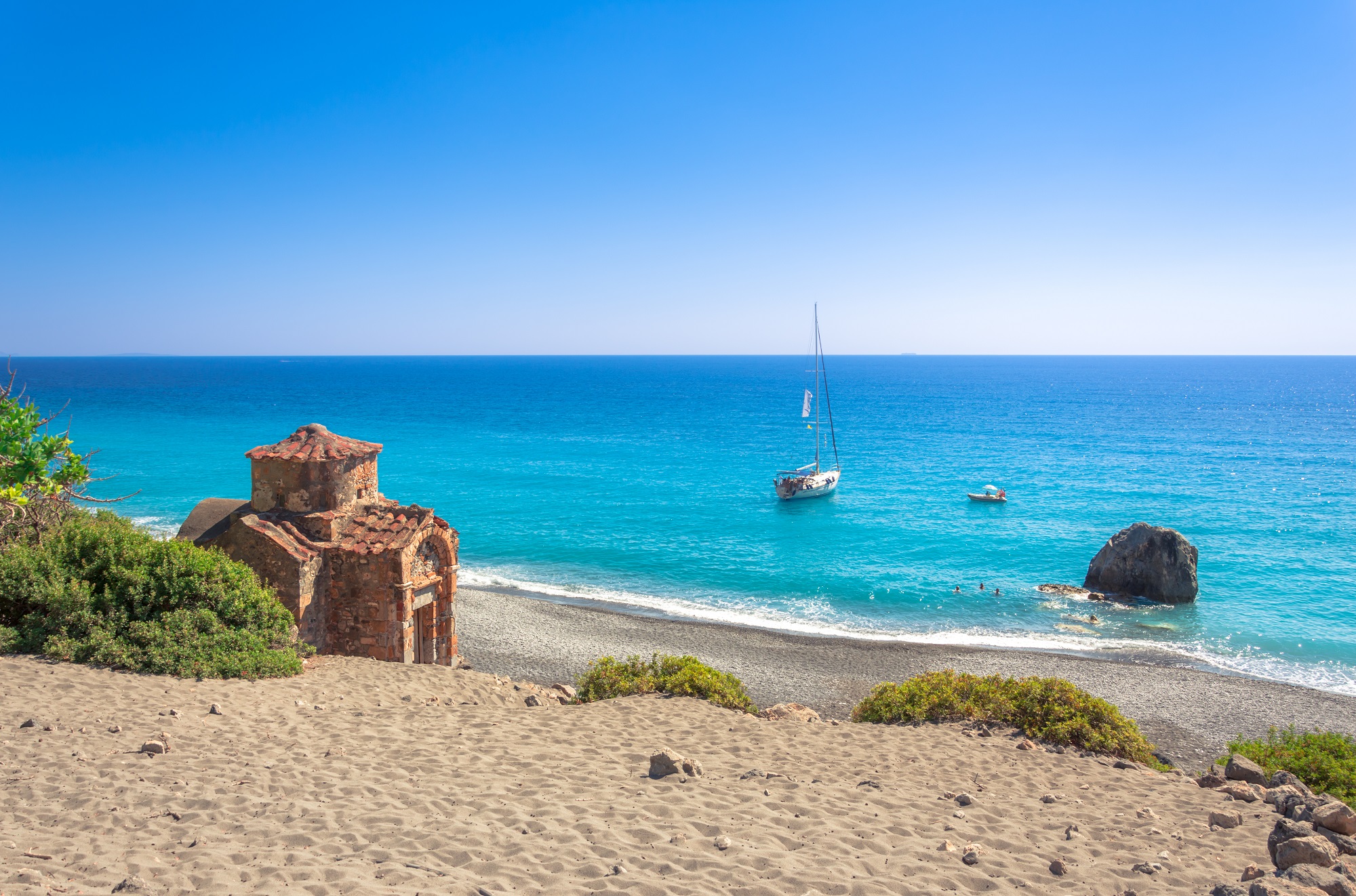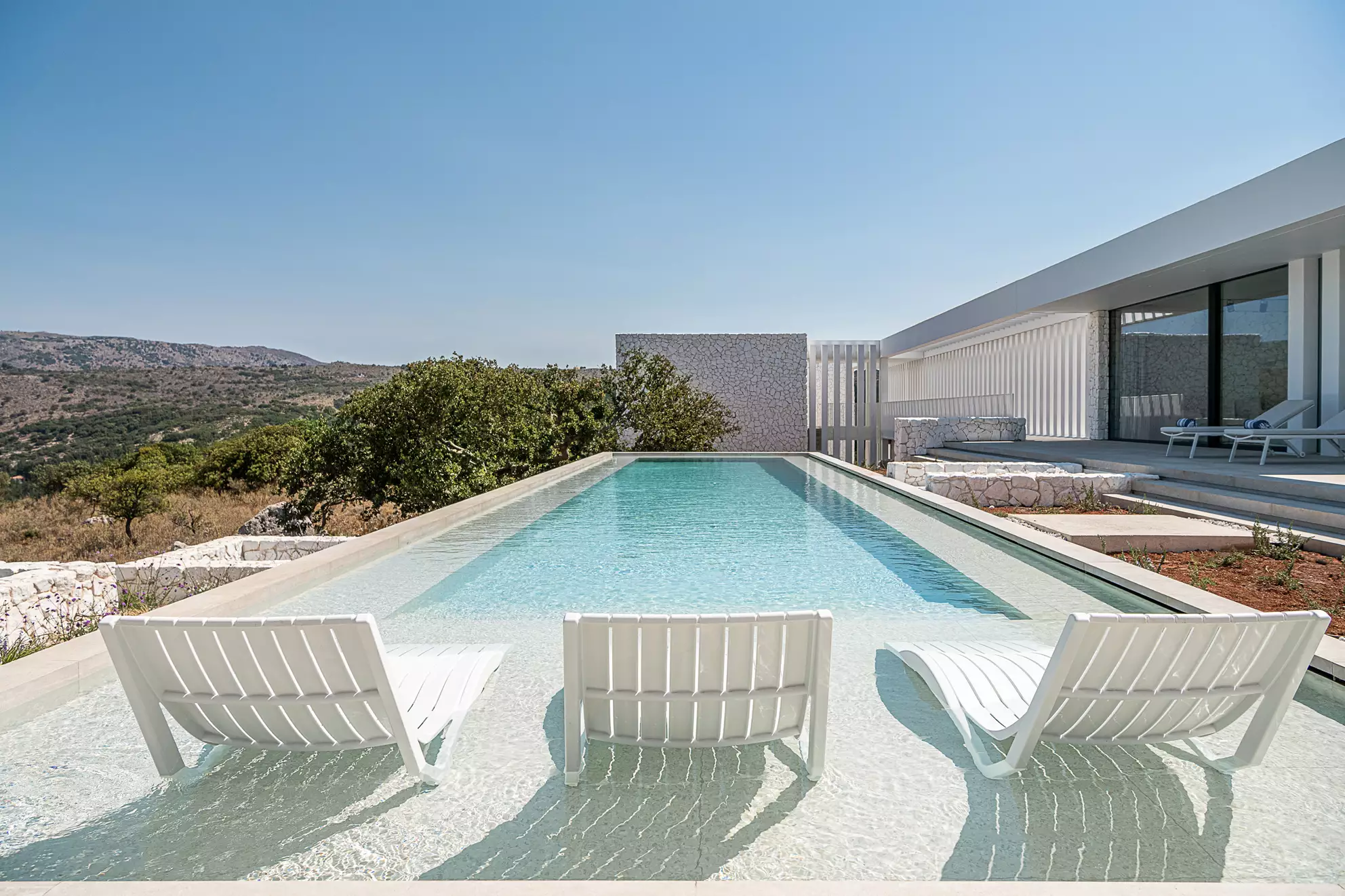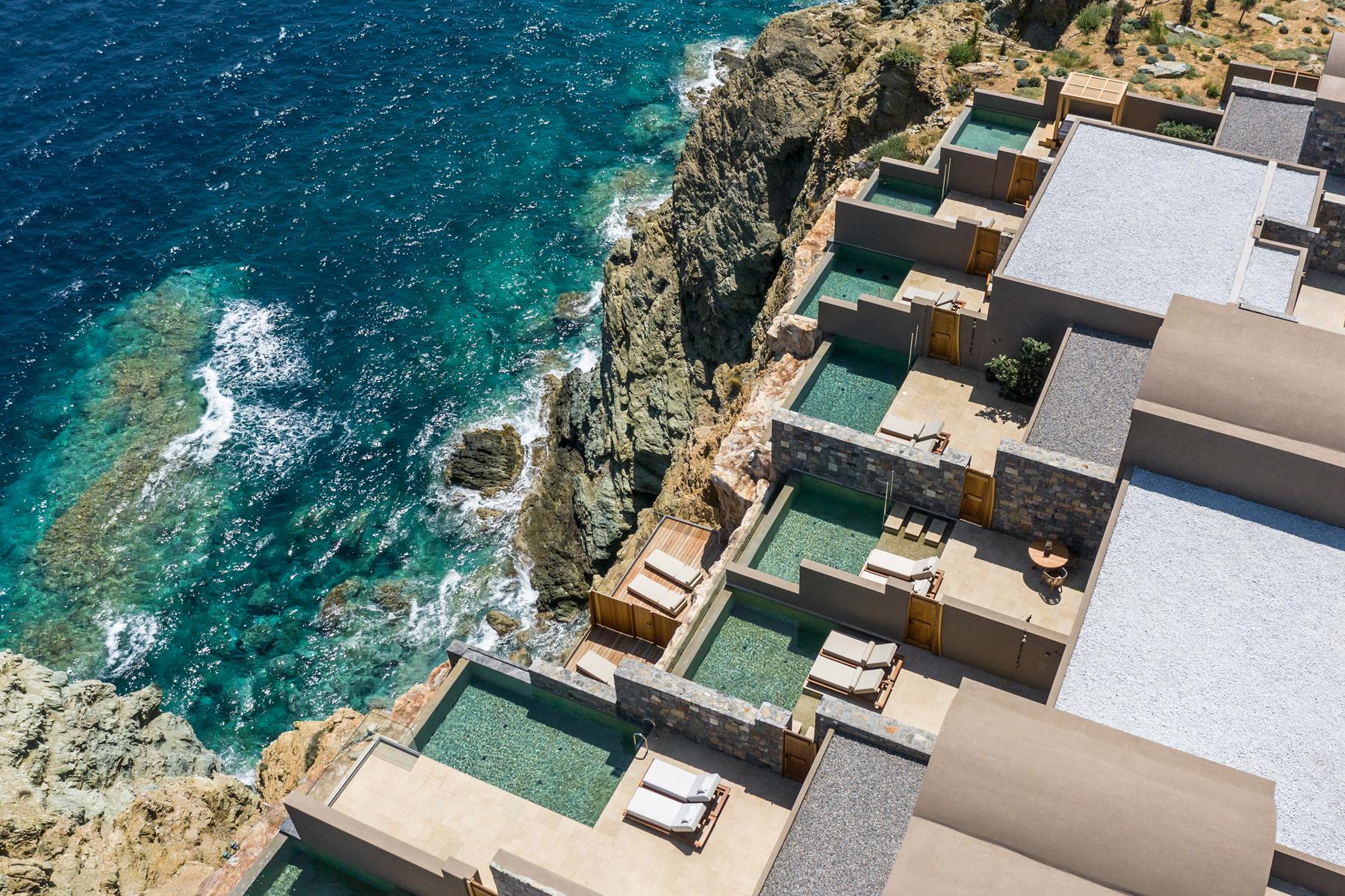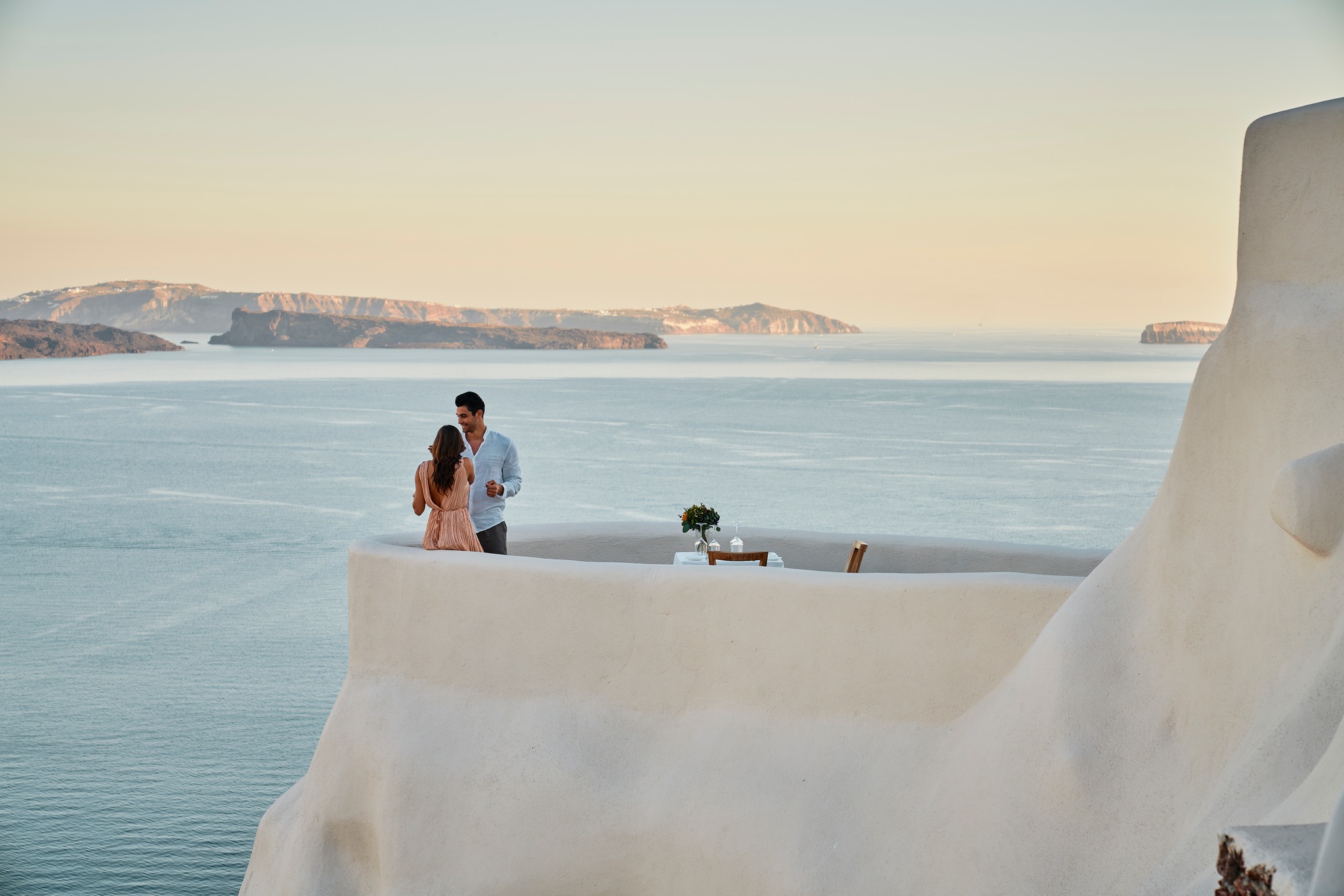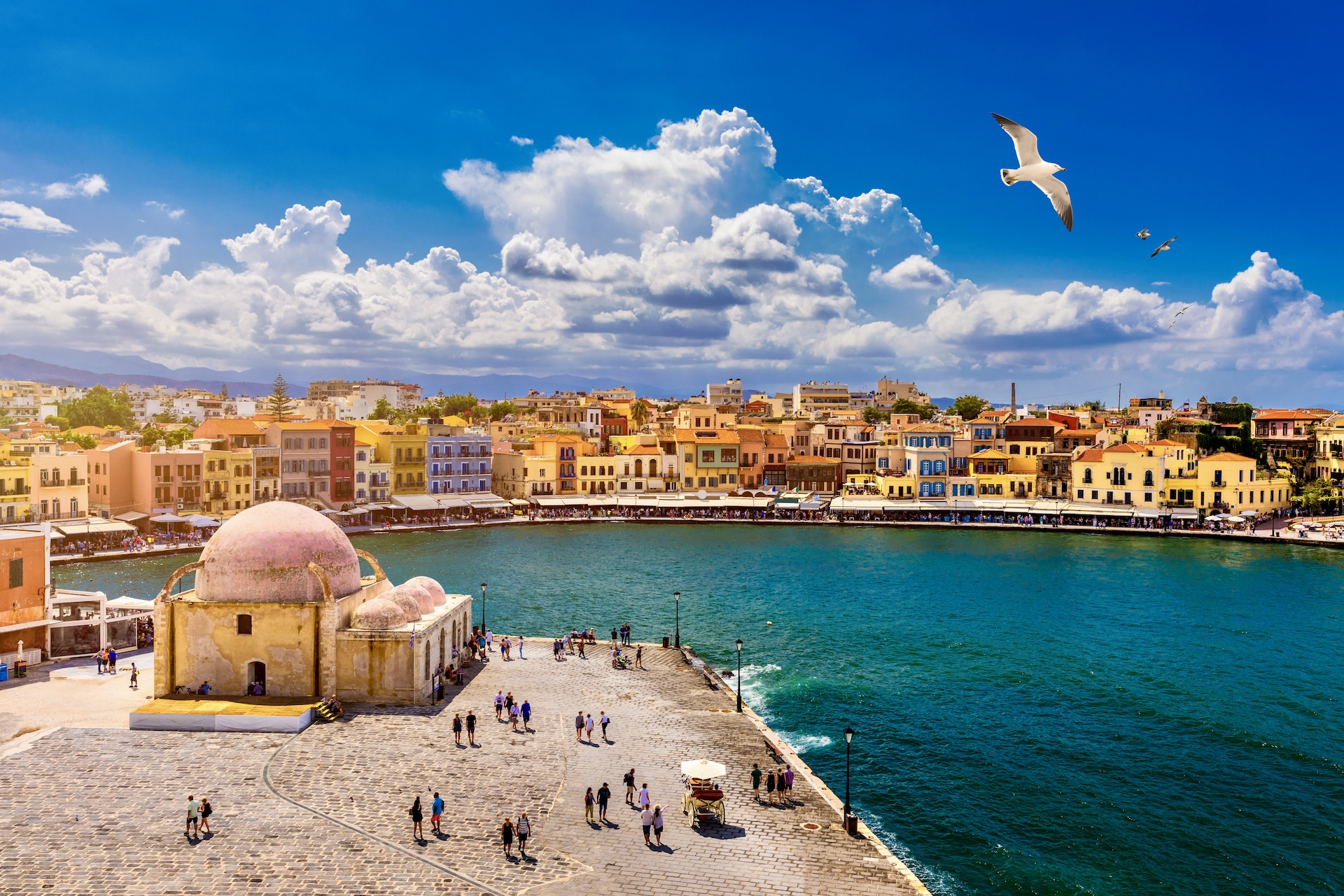Agios Pavlos, a secluded beach in southern Crete, is not the type of beach to be simply run into, nor is it easily reached. Excursions to the location need to be well organised, but the effort required is well compensated as you will find yourself at a virtually untrodden beach, sure to impress.
Do not confuse this beach with the better-known beach of the same name, 58 km south of Rethymno, close to the Melissa cape. The Agios Pavlos beach referred to in this article is in the Hania regional unit, in the Sfakia area, at a spot known as Piso Aigialoi by locals.
Confusion over the two synonymous beach areas dates back to the early Christian period, when Paul the Apostle passed by southern Crete’s coastline while on a voyage to Rome. Both aforementioned beach areas ended up being given the same name, but it has remained unclear as to which of the two is described, in available sources, as the beach associated with Paul the Apostle’s visit.
It was long believed that these sources refer to the beach in the Sfakia area, but closer examination has indicated that they could be referring to the beach in the Rethymno area.
The Sfakia area’s Agios Pavlos beach is situated between Agia Roumeli and Loutro, 3 km east of the former and 6 km west of the latter. Neither of these two seaside villages has a road running to Agios Pavlos beach. It measures 1.5 km in width and is covered by pebbles as well as coarse sand, a combination giving a silver-grey impression.
The surrounding environment is rugged. The ends of two gorges, Elygia and Sapounas, are located close to the beach, enriching the natural beauty offered by the beach, which is surrounded by the lovely Selouda pine forest. The trees, however, do not reach as far as the beach area, so do not expect to find shade. If planning to spend some time at this beach, make sure to be equipped with a wide-brim hat, sunglasses and high-protection sunscreen.
A small, picturesque church of the same name, built on the beach, alongside the superb waters of the Libyan Sea, offering many shades of blue, is a trademark feature. A Byzantine-era church, it dates back to the 10th century. The church is well preserved and may be visited. Its interior is simply decorated, icons being the main feature. As expected, beach umbrellas, or any other services, are not offered in the area. However, a small taverna, also named Agios Pavlos, is situated close by for meals, drinks and water.
The waters at Agios Pavlos beach deepen abruptly, are quite cold, but are as clean as can be. Generally, very few people gather here, even during summer. However, do expect to find a fair number of people at the beach during the first half of August, the summer season’s peak period. Even during this busier period, visitors can detach, if desired, by heading eastwards along the coastline, towards a trail leading to the surrounding pine forest.
How to get there
Neither Agia Roumeli nor Loutro, the two seaside villages closest to Agios Pavlos, have roads leading to the beach. Agios Pavlos beach may be reached via the E4 European network trail linking the two villages. A trekking route beginning from Agia Roumeli is recommended. It runs smoothly and requires about an hour to cover. The route from Loutro, definitely more challenging to cover, is suitable for experienced trekkers. This route requires about four hours to cover on foot.
The only other way of reaching secluded Agios Pavlos beach is by boat. This is simple for boat owners. Persons without private boats will need to arrange for boat transportation, either from Agia Roumeli or Loutro, and back.
Read also:
Two beaches in one -Domata, the secluded beach of southwest Crete
Lake Chimaditis: an amazing, yet little-known wetland in Florina



